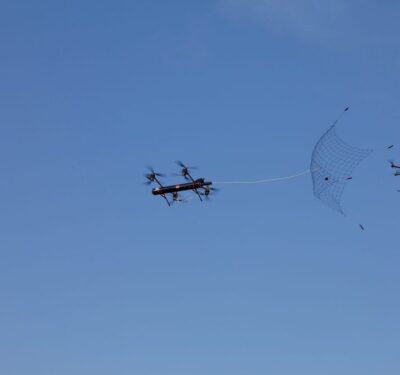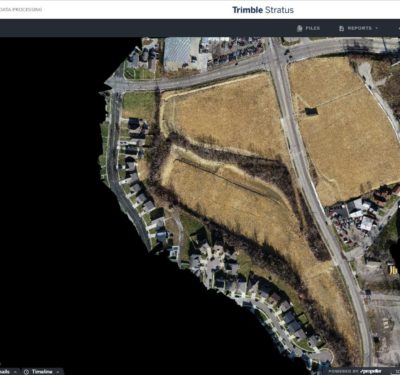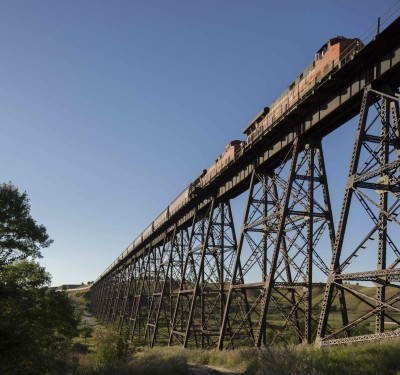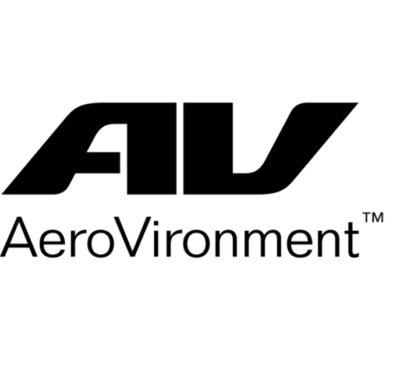
The aviation services company Xwing, which plans to fly cargo autonomously on regional aircraft, has signed a three-year contract with NASA to develop safety cases for increasingly autonomous flight operations, a deal that would see the company and agency exchanging operational data, flight algorithms and other expertise.
The San Francisco-based company says it is the first to introduce autonomous flight technology on regional cargo aircraft, although almost all of its current fleet consists of standard Cessna Caravans flown by human pilots. The company flies more than 400 weekly cargo flights for UPS, operating from 58 airports in 14 states. The Cessnas can carry 340 cubic feet of cargo in the fuselage and an additional 111.5 cubic feet in an underslung cargo pod.
Thirty-five of its Xwing’s planes are unmodified, but one is equipped with the company’s Superpilot autonomous flight system that allows it to fly itself. Another self-flying Cessna is on its way to the fleet, said Jesse Kallman, Xwing’s vice president of commercialization and strategy.
The contract with NASA, under the umbrella of its System-Wide Safety Project, will allow Xwing to benefit from the reams of data NASA has gathered from flight operations in the National Airspace System, including algorithms for auto landing and collision avoidance, which will aid the company as it expands its automated flight systems.
NASA in turn gets Xwing data from its regional cargo operations as well as a peek into the systems underlying its future self-flying aircraft.
“We have our automated aircraft … but we also have a Part 135 airline which is gathering significant data that can also generate information on different types of airport environments, weather environments, potential emergency situations” and more, Kallman told Inside Unmanned Systems, referring to a Federal Aviation Administration license for on-demand, unscheduled air services.
Xwing’s data will help NASA develop new infrastructure standards, pilot and operator certification standards, among others. Among the chief goals of the three-year contract are to identify risks and hazards and evaluate the safety of using vision-based landing systems to detect and identify runways, and to evaluate techniques and assurance processes for aircraft localization and GPS enhancement.
“NASA focuses its research and technology transfers to have real impact, and this will help NASA understand the real-world challenges that industry is facing,” Misty Davies, NASA System-Wide Safety project manager, said in an Xwing press release. “Emerging aviation relies heavily on advanced automation to ensure safety, and Xwing is working to bring novel, safe aviation opportunities to the American public.”
Superpilot is not yet certified by the FAA but has been flying under an experimental certificate since 2020.
In 2021, the company completed what it said was the world’s first autonomous cargo flight, when the Cessna Caravan equipped with Superpilot backed out of its gate, taxied onto the runway, took off, flew a predetermined mission route, landed and returned to its gate. A safety pilot was on board but the company said the airplane flew the mission entirely on its own, and all air traffic control interactions were handled from the company’s mission control center in Concord, California.
Kallman said autonomous flight certification will come in a series of supplemental type certifications for the various subsystems, starting with the detect and avoid system. In the meantime, the Part 135 airline work “is not just about collecting flight data, it also helps on the automation front,” Kallman said. “Automating aircraft, the flying part is not hard.”
Other operations are more difficult, such as taxiing, moving around other aircraft on the ground and establishing emergency operations, he said.
The company’s aim is to “continue sharpening its operational capabilities across all aspects of air cargo and to streamline the rollout of its autonomous technologies within its fleet once certified,” Xwing said in its press release. Another goal is maximizing the efficiency of regional cargo operations, such as by engines and other systems operate at their most economical speeds and organization cargo operations on the ground so airplanes aren’t kept waiting and never have to fly back empty, thereby wasting fuel. “We have a team of people looking at that,” Kallman said. “How do you optimize the routes, how do you optimize fuel burn? It actually can have quite a big impact if you’re automating engine settings to go at their most optimal, and if you’re automating routes … we’re [also] looking at the loading and unloading operations.”






